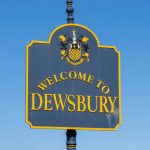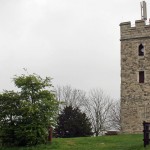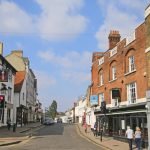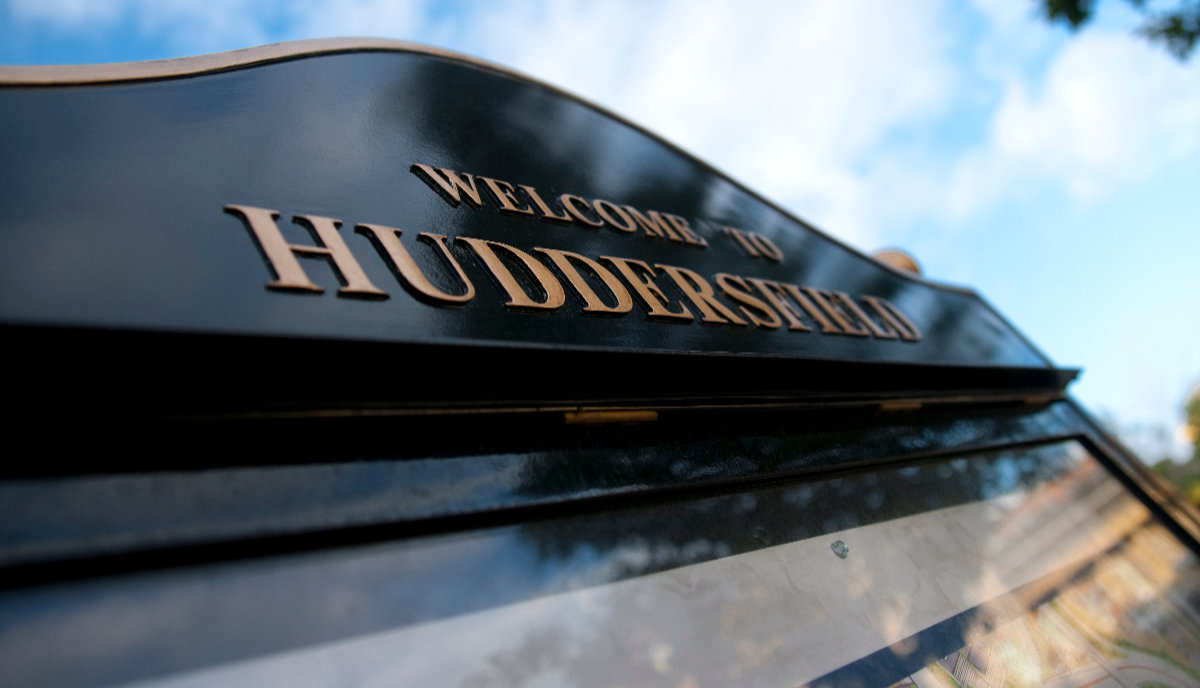
Huddersfield The Birthplace of Rugby League! Nestled between the River Colne and the River Holme lies the Market Town of Huddersfield, the birthplace of Harold Wilson. It is also home to a football team that dominated a decade of English Football; admittedly in years long past. But as you will see when you read on its not just famous for having a couple of storied sporting clubs (more on that later) or for producing a PM. It’s a town with quite a history, that has loads of places worth visiting and a huge number of buildings worth seeing, heck even the railway station is a Grade I listed building.
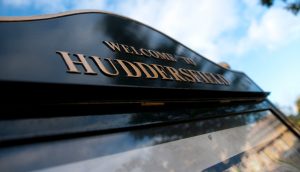
Image: Electric Egg/Shutterstock.com
Anyway, join us for Let’s see what historic Huddersfield has to offer, the Five Minutes Spare way!
Pre-History, Huddersfield, and the Roman Conquest
Huddersfield was first occupied by humans in Neolithic times. It is thought that the nearby fort at Almondbury (Castle Hill) was first occupied around 2100 BC. The earliest recorded human settlers to come here were the Brigantes, in 1 BC. Later, Anglo-Saxons and even Normans would inhabit lands here eventually. The Romans would have arrived around the 40 BC mark – or shortly after, as they worked their way north from the south-east coast.
A Roman road would have run through this area on its way to the fort at Slack. It would have stood right where Outland Golf Club now is! There’s a great reconstruction of it overlaid with the land, here. The Romans built things in wood very quickly and could throw up a fort in a week or two using their soldiers. They used these forts by strategically placing them throughout occupied lands in order to control the masses.
Anyway, they would have been gone by 100 AD or thereabouts. They never made it through the whole of the UK – but they certainly conquered most of it. When they left the area an Anglian settlement moved into the Hillhouse area – or so historians suspect.
The Vikings Pay A Visit
After the Angles and the Saxons had effectively mingled with the population, the Vikings came. There’s no recorded evidence of a settlement in the area but alas, Huddersfield sits at the point where two rivers meet. They were probably raided quite hard. If we were metal detectorists we would be checking the area out thoroughly for buried treasure.
Anyway. Once the Vikings failed to conquer anything and went home with all our treasure, Huddersfield fell into the hands of the Normans. Just before this and built by persons unknown, someone turned the fort at Castle Hill into a stone fort. It still survives today and has been rebuilt and evolved so many times everyone seems to have forgotten. What we do know is that by the time the Normans came they ordered the Domesday Survey – and Huddersfield was in it, and already sizable.
Huddersfield After the Normans
When the Normans came here and won the battle (circa 1066) they changed everything. What lands previously belonged to the king were split between the conquerors as part of Pontefract. The land was granted to Ilbert de Laci as a reward and remained in his family for about three hundred years. The interesting part is always what is mentioned in the Domesday Survey, though.
There are no people recorded as living in Huddersfield. There are two reasons for this. Either it had so large a population that there was no recording kept, or it was abandoned. We do know that there were 8 ploughlands and 1.1 leagues of woodland. We are tempted to err on the side of Huddersfield having a large population because plough teams would have been needed to till this land. Also, the land made 5 whole pounds annually for the lord in 1066. This points towards tenants, workers, or (probably) slaves. In addition, we know that Huddersfield has been a market town since Anglo-Saxon times.
Around this time Huddersfield became part of the hundred of Agbrigg. The Hundreds were groups of settlements overseen by set Lords, each of which could easier rule and report back to their king. They were the Norman equivalent of the well-placed Roman fort. Domesday was also the first time the current name ‘Huddersfield’ was recorded. It was spelt Oderesfelt, which literally means the fields belonging to Oder/Huder. At the turn of 1000 AD, the lands were in possession of King Stephen, who had a constant battle with the Scots, and with English traitors, to keep the throne.
After 1322 the Norman di Laci family lost possession of the manor to the crown. It was bought again in 1599 by the Ramsdens, who owned it right up until the 1920s. When they talk about ‘old money’ it is these families they talk about. Everyone else made money weaving, it seems, right up until that railway line arrived in the 1840s…
In 1349, or around that time, the Bubonic Plague reached Yorkshire. It spread up and down the county with alarming speed and decimated populations of all settlements. Worse, it would return again and again bringing new waves of disease. Throughout England, there are stories of it wiping out entire settlements to the extent that there weren’t enough people left to bury the dead. There don’t seem to be any specific records from this time that are Huddersfield specific. The forecast for Yorkshire in general, however, did not look good. Anyway lets lighen things up briefly with a few bits of trivia.
Things That Not a lot of people Know About The Town…
Huddersfield is one of Britain’s more ancient towns meaning it has more than its fair share of interesting facts. Some of our favourites include…
- The Yorkshire Terrier dog breed is thought to have originated in the town via the original stud dog “Huddersfield Ben”.
- Huddersfield has not one but two Canals, the Broad Canal and the Narrow Canal. They date from the 118th Century and are now fully restored and navigatable. The Broad Canal can accept barges with a 14-foot beam!
- In 1920 Sykes & Sugden Ltd began building the LSD 3-wheel car In Huddersfield, which unusually had a single rear wheel. It didn’t catch on and production ended in 1924. Very few are left but you can see one in the Tolson Historical Museum in the town.
- During WWII there was an anti-aircraft battery at the base of Castle Hill, the ruins of this can still be seen. It has stood guard over the town since 555 BC when it was an Iron Age fort. The Town escaped largely unscathed by the bombing raids of 1940-41 so it looks like Castle Hills defences did its job.
- Huddersfield Town FC was the first English team to win the league 3 times in a row lifting the trophy in 1924, 1925 & 1926. Not bad for a team who had gone bankrupt in 1912!
- Rugby League as we know it today began on 29 August 1895 in the towns George Hotel, known then as the Northern Rugby Football Union Union.
- Finally, the huge nodding dog statue commissioned by “Dogs Trust” was built in the town by KD Decoratives. At 11 foot 6 inches it is quite an impressive sight despite being a sense assaulting shade of yellow! Now that’s a claim to fame worth having!
See! Huddersfield is full of fun and interesting little nuggets. now we have lightened things up a little, let’s explore how it got to be the 11th largest town in England, just don’t tell the locals. They will swear it’s the biggest.
The Industrial Revolution
The seeds of Huddersfield’s growth were sown in 1776 with the advent of the Cloth Hall, which laid the foundation for the towns moves into the realms of textiles powerhouse; something aided further by the construction of The Huddersfield Broad Canal by Sir John Ramsden which ironically was also completed the same year. This gave the town access to the Calder and Hebble Navigation waterway, and thus trade began to flourish. By 1811 the Huddersfield Narrow Canal was open and with it came further growth. However, this path to growth didn’t run smoothly as you will see.
You will have heard the term “Luddite” the word was used to describe those that didn’t want industrial change? Well, they were alive and kicking in early 19th Century Yorkshire and prior to this, the town had a large population of workers that created woven wool for extra income. The factories took this away and the hoes and pitchforks were soon being brandished. In 1812 a mill owner who was known to be a particularly cruel master was murdered in the town and soon strikes and disorder were rife.
Soon the army was positioned near the town in a barracks built specifically for uprisings and strikes. However, all this strife was not in vain as it meant that the northern industrial regions largely escaped the rigours of the Poor Laws Act of 1834. Yorkshire as a whole benefitted from the efforts of Richard Oastler, who campaigned tirelessly for factory reform and on the back of this the lives of the textile factory workers improved drastically and along with it general commerce.
Its a Train
What really made this town thrive was the arrival of the railway. It wound up through here and connected London to the Peak District. Unfortunately, this didn’t sit well with the locals. As mills began to utilise waterpower and set up factory-like mass production – the locals rebelled. Huddersfield was a notable centre of resistance to the industrial revolution… a story not shared by many around the country.
By the 1900s, Huddersfield had gas, street lighting, libraries and everything else needed for a successful town. 1889 had seen the introduction of the ‘Miss Sunderland’ competition, in 1836 a choir formed… in the 1900s several sporting personalities were formed here as a result of the provision of leisure facilities all those years before.
In 1920, the town bought itself from the Ramsden family. This should give you some indication of how successful it was, even as WW1 drew to a close. During WW2 the town took a vital role in engineering and manufacturing. The establishment of the military in the area stood the town in good engineering and developing stead when the war hit. In fact, some of the miniature submarines used by the British army were built here. They made a major contribution to the war effort, proving that just because you are a socialist town, doesn’t mean you turn your back when your country needs you.
For the moment, let’s talk famous faces. We already know Patrick Stewart and former Labour Prime Minister Harold Wilson came from Huddersfield… but we’re certain there are a few more than that!
Famous People from Huddersfield
So how many more famous people come from this idyllic large town? Here are some of the names you might know best:
- James Mason – You don’t get all the way through any article about Huddersfield without mentioning James Mason. Although English born, he did make his way to the genuine Silver Screen in Hollywood circa 1945. He notably starred in the Odd Man Out.
- English actress Jodie Whittaker is also Huddersfield born and is still very famous.
- Ajmal Shahzad – English cricket coach and former cricketer himself. We don’t know much about cricket, but this guy sounds like he might have been up there.
- Artist David Tindle still lives in Huddersfield, although he is in his 80’s now.
- Show jump rider Robert Whitaker is also from Huddersfield
Added up, you have sports personalities, music producers, radio presenters, politicians, famous party leaders, and even Hollywood actors out of Huddersfield. That’s a pretty impressive list of people for one town[i]. There are whole cities who have made less contribution to the British art scene. Keep it up, that’s all we have to say.
Huddersfield Attractions
Huddersfield is chock-full of sights to see and things to do. Here is an amalgamation of all our best bits of the town. Try to see as many of them as you can, while you are there.
Outdoor and Recreational Spaces
One of the favoured attractions in Huddersfield is the Kirklees Light Railway, which stops in the city. It goes up and down Yorkshire on a lovely scenic trail, and lets you ride a genuine steam train… this experience is something you don’t’ get very often and is one the kids will remember forever. As well as the ride you get to know a lot about the history of locomotives.
However, outdoor attractions are definitely not thin on the ground here in Huddersfield. Beaumont Park is a municipal park just south of the town centre. It contains the railway viaduct which is what makes it so popular. It has some special views of the River Holme, a series of waterfalls, and even a boating area. Of course, it’s England so there’s also a tearoom.
If you don’t want a river valley park then check out Greenhead Park, opened in 1884! This place has a distinctly Victorian feel to it, right down to the layout of the flower beds. There’s a pond, a café, swing sets, tennis courts… it’s really lovely and the locals prefer it because it’s a bit quieter.
Landmarks and Historic Attractions
Don’t by-pass Castle Hill while you are in town. The tower that stands on it was built in 1899 as part of the Queen’s Jubilee celebrations. The hilltop dominates the Kirklees skyline for miles around so you really can’t miss it. The view is very much worth the climb. It has been a noted defensible location since the about 2100 BC.
Since there are a variety of canals in the area, it would make sense that Huddersfield has its very own visitor centre for such things. In fact, the centre supports the Standedge Tunnel. This is Britain’s longest, deepest, scariest, darkest canal tunnel and you’re supposed to wear a hard hat if you go in there. Looks fun.
Of course, you can visit the railway station itself if you want a landmark fit for royalty. If trains don’t grab you, however, have a look at the architecture of Huddersfield Town Hall. It’s a well-known events venue so you might catch an expo here.
Museums and Art Galleries
You really do have your pick of museums here. Probably because of all the protesting back in the Luddite times. Visit the Tolson Museum for extensive collections of fine art. They have their own galleries that come highly recommended. If you want to learn about how the Colne Valley thrived after all those protests, then visit the Colne Valley Museum. This place has some functioning 1850’s replica rooms to let you get a glimpse back through time. If you want exclusive access to arts with minimal museum input, then you want the Huddersfield Art Gallery. Where art history is all the museum-input you might come across.
Finally, you can pop into the University – the largest employer in town – and poke your nose into the archives. This service is referred to as the Heritage Quay, and if you have ancestry in the area, want to know more about the plague, or figure your great, great, great, great grandfather had a part to play in all that rioting? This is where you go to find that out.
Football and Rugby
Sport is big in Yorkshire and Huddersfield has played its part in putting both Football and Rugby firmly on the map and both still play a big part in the town’s identity with both Rugby League & Union on offer. Despite its rugby heritage, we will start with football as that is where the town has historically had the most success.
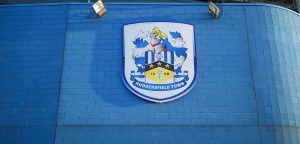
Image: Michael715/Shutterstock.com
Huddersfield Town or the “Terriers” are the towns football club and they do fairly well for themselves. Again, visit their website to book a stadium tour or buy tickets to the next game. It seems like Huddersfield are really big into their sports. We don’t blame them. There have been a few medallists from the area…
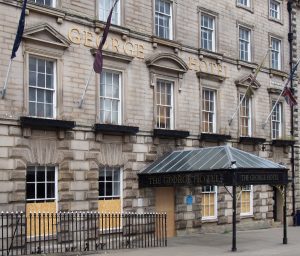
The George Hotel Grade II listed and home of Rugby League.
Image: Philip Openshaw/Shutterstock.com
Huddersfield Rugby Union Football Club (HRUFC ) are unofficially the towns oldest sporting club having begun plating with the oval ball back in 1869. They enjoyed some early success winning the Yorkshire Challenge Cup (YCC) final in 1890 beating Wakefield. The split of the rugby codes in 1895 led to the team disappearing for 14 years only for them to be re-born in 1909 as the Huddersfield Old Boys.
They recaptured that early success with a stunning against the odds win in the 2011 YCC, which made up for the disappointment of two previous finals losses in 1932 & 1970. In 2019-20 they competed in the English RU North 1 East Division (tier Six) and play their home games at the 2000 capacity Laund Hill Sports Park.
Other Notable Attractions
There are so many things to do in Huddersfield town that we couldn’t fit them all in with the detail we would have liked to. Here are another few things we would want to see if we were visiting:
- There is a Mecca Bingo centre and a Casino – whoopee for the gamblers!
- Try the Magical Forest Children’s Play Centre, or the Woodlands Play Gym, if you want soft or outdoor play centres for the kiddies.
- Take a trip out to Scammonden Reservoir for a great view and to meet all the local dog walkers.
Whatever you do in Huddersfield, try to remember to have fun!
Where to Eat, Drink and Party in Huddersfield?
If you want to treat your family to a fully immersive, American-diner experience, then head to PAX Burger. It regularly scores more than 4.5 stars in reviews and it is something a little bit different. If you want a classic setting for a date then try the Bionic Chef, it combines fine foods with contemporary British cuisine. What’s not to enjoy except the bill?
When it comes to wine over dine, try Revolution on Cross Church Street. They are a bar with a distinctive variety of Gin cocktails. Infusion Cocktail bar is open in the site of what used to be Voda Bar and carries a great reputation as a good place for a night out. If you are looking for somewhere to dance all night try Eden Nightclub for inspiration. You can even hire local firm Jumping Jacks if you want to throw your own party.
There’s something for everyone in this not-quite-a-city. Go explore, enjoy yourself, and report back if you are able. We are sure there will be some Huddersfield beauties that we have missed.
Getting to Huddersfield
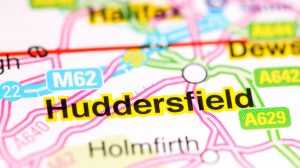
Image: SevenMaps/Shutterstock.com
Now that we have covered everything else, you maybe want to know how to get there. It’s not the easiest place to reach from London & the South or from Scotland for that matter,but as you will now be aware, the effort is well worth it!
By Road
If you follow the M1 north out of London, then head west when you hit Wakefield, you will come to Huddersfield. It sits on the M62.
By Rail
Huddersfield Train station is on the Northern line. It’s also a Grade I listed building for those that love trains.
By Air
Your nearest airport is Leeds Bradford International. It’s around 25 miles away so pretty close.
By Sea
Alas, you are not on the coast. However, the Vikings did it by sailing up the rivers and so could you. The River Colne or the River Holme will take you to Huddersfield if you follow them in the right direction for long enough.
Got Five Minutes?
If you reluctantly enjoyed our tourist guide to Huddersfield then you will be delighted to know that we have about a hundred more of them… not all on Huddersfield, though. Head on over to the travel section of Five Minutes Spare and have a look for yourself. We have something for everyone. See if you can spot your hometown.
[i] https://www.ranker.com/list/famous-people-from-huddersfield/reference
